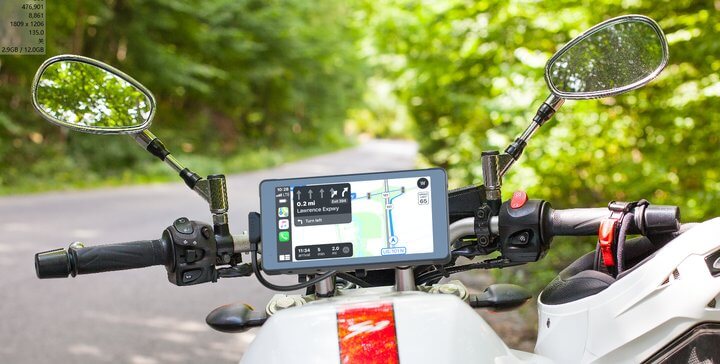A common issue for many drivers using a CarPlay-enabled car stereo system connected via an AUX cable is the persistent buzzing noise that can detract from the listening experience. This problem may arise from various sources and through understanding these, one can apply specific solutions to enhance audio quality. This guide offers a detailed exploration of the potential causes and effective solutions to eliminate this issue.
1. Cable Quality Issues
Cause: Buzzing noise often originates from using a low-quality AUX cable. Such cables lack adequate shielding and are prone to pick up electromagnetic interference from the surrounding environment, including the car’s own electronic systems.
Solution: To reduce or eliminate this noise, it is recommended to use a high-quality, double-shielded AUX cable. These cables are designed to protect against external interference, ensuring clearer audio transmission.
2. Grounding Problems
Cause: Inadequate grounding can lead to a variety of electrical interference issues, including buzzing sounds. This is because poor grounding can fail to properly channel away the electrical noise generated by the car’s power systems.
Solution: Inspecting and improving the grounding of your car audio system is vital. This may involve re-grounding certain components or employing a ground loop isolator, which can prevent the ground loops that cause audio interference.
3. Device Compatibility
Cause: Not all devices are fully compatible when linked via an AUX connection. Incompatibilities can manifest in how devices handle voltage levels and signal processing, leading to distortion and noise.
Solution: Testing with various devices can help pinpoint if a particular device is causing the issue. If noise occurs only with specific devices, it may be necessary to consider alternative connection methods or adjusting device settings.
4. Power Interference
Cause: The car’s electrical system, particularly its alternator and ignition systems, can produce significant amounts of electromagnetic interference, which can be picked up by audio systems.
Solution: Implementing noise filters or decoupling devices can effectively minimize the impact of power-related interference. These devices work by isolating the audio system from the electrical disturbances of the car.
5. Audio Device Settings
Cause: Overly high volume settings on your audio output device can amplify existing noise, resulting in a buzzing sound.
Solution: Lowering the volume on the audio device and adjusting equalizer settings can significantly reduce noise levels. It’s crucial to find a balance where the audio is loud enough without straining the system.
6. Car System Settings
Cause: Incorrect audio input settings on the car’s stereo system can contribute to poor sound quality, including noise.
Solution: Regularly check and adjust the audio input settings on your car’s stereo system. Ensure that settings such as input levels and equalizer are optimized for the best sound reproduction.
7. Software Updates
Cause: Outdated software in your car stereo or connected devices can lead to compatibility issues and contribute to noise problems.
Solution: Keeping your car stereo and connected devices updated with the latest firmware or software ensures compatibility and often resolves underlying bugs that may cause noise.

8. Ensuring Full Cable Connection
Cause: A partially connected AUX cable can result in poor contact and consequently, introduce noise.
Solution: Always ensure that the AUX cable is fully and securely inserted into both the car stereo and your audio source device. A secure connection minimizes contact issues that can lead to buzzing.
9. Verifying the Correct Port
Cause: Misconnection of the AUX cable into non-intended ports can easily occur, especially in complex car dash setups.
Solution: Double-check that the AUX cable is connected to the port labeled "input" on your car stereo. Connecting to an output port or another interface can result in no sound or increased noise.
10. Checking for Hardware Damage
Cause: Persistent noise issues, despite troubleshooting, could indicate hardware damage either to the AUX port or internal stereo components.
Solution: Consider professional inspection of your car stereo system if all other solutions fail. If damage is found, using alternative audio transmission methods like FM transmitters can be a suitable workaround.
Alternative: Using an FM Transmitter
If AUX solutions prove ineffective, using an FM transmitter provides a viable alternative. Here's how to use one:
- Select an FM Transmitter:Ensure it is compatible with your audio source device.
- Connect the Device:Plug the transmitter into your audio device.
- Set the Frequency:Choose a clear FM frequency on both the transmitter and your car stereo to avoid local interference.
- Transmit Audio:Play your music. The audio will wirelessly transmit to your car stereo, bypassing faulty AUX connections.
Recommended reading: How to Play CarPlay Sounds Using Your Car's Speakers
Explore Lamtto’s Car stereo
Discover Lamtto Car stereo with CarPlay and enhance your in-car entertainment and connectivity with this multifunctional system, designed with universal compatibility for a wide range of vehicle brands and models. Car stereo with CarPlay seamlessly transforms your factory-installed wired Apple CarPlay into a wireless system, offering easy access to your favorite apps, maps, music, and hands-free calls without the hassle of plugging in your iPhone every time you drive. Compatible with most vehicles, it allows you to switch to your car audio anytime, enjoying lossless sound quality. Experience the convenience and quality of Lamtto Car stereo in your vehicle today.
After-sales service
No matter what challenge you face, Lamtto's service is always there for you and committed to providing you with a solution. If you have any problems with your carplay, please feel free to contact us: support@lamtto.com
Conclusion
Resolving buzzing noises in your car stereo when using CarPlay and an AUX cable involves a systematic approach to identify and address various electrical and mechanical issues. By following the detailed steps in this guide, drivers can enjoy a clearer and more pleasant audio experience. Should standard troubleshooting fail, exploring alternative audio transmission methods like FM transmitters can provide a reliable solution, ensuring uninterrupted high-quality sound during your travels.





Leave a comment
All comments are moderated before being published.
This site is protected by hCaptcha and the hCaptcha Privacy Policy and Terms of Service apply.